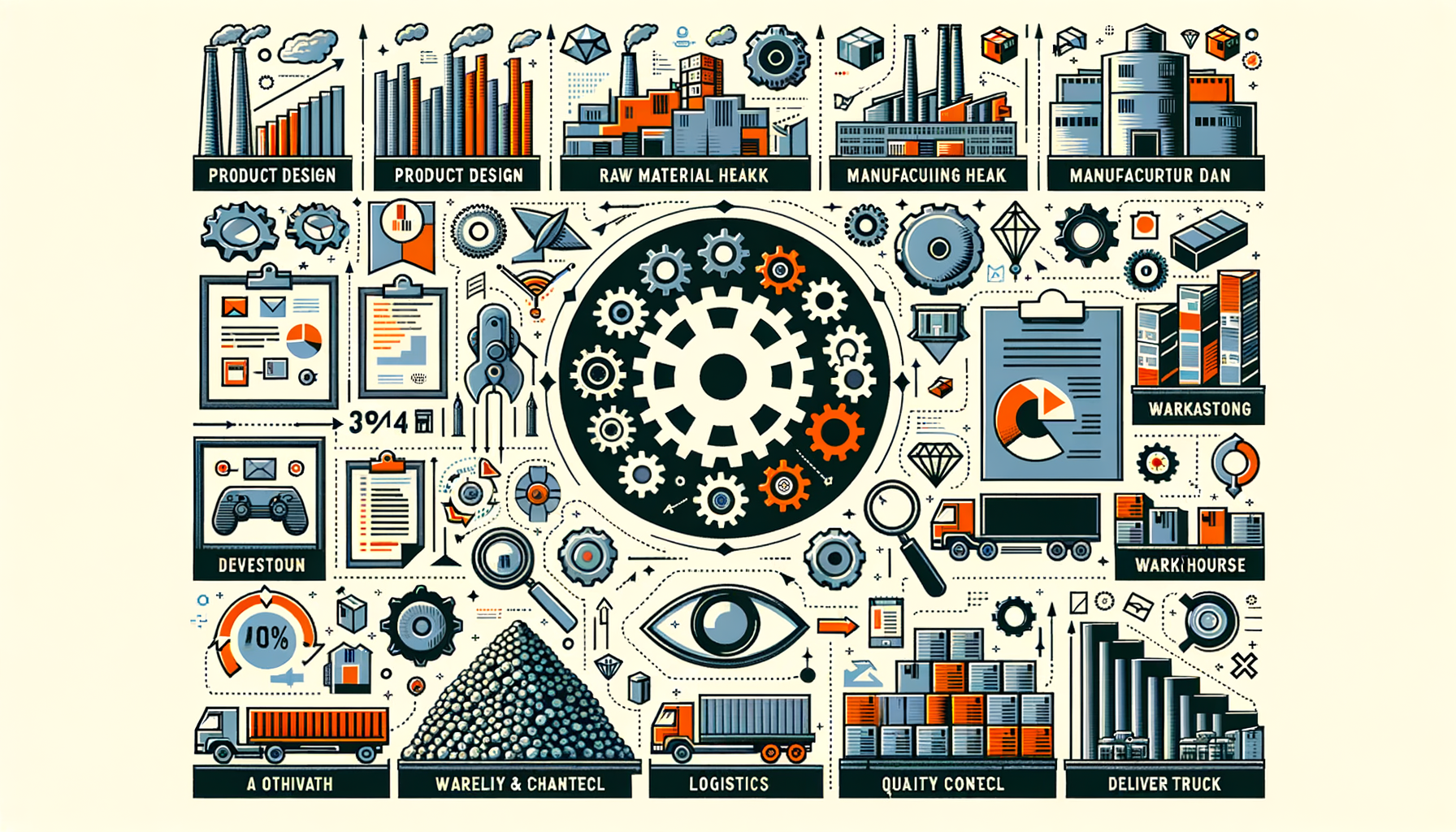
Invalid table data
Even though working across different cultures can feel a bit intimidating, there's something undeniably fascinating about stepping into a world where language, tradition, and business practices blend so seamlessly. When it comes to Korean production management, this blend becomes even more intriguing, partly because of the nation’s emphasis on innovation, and partly because of its commitment to teamwork and consistent improvement. In this friendly little guide, I’d like to walk you through some helpful Korean terms and ideas that might open a new door to understanding how production works in Korea. And yeah, if we slip into a few small quirks now and then, consider it part of the fun!
Delving into Korean Production Management
When we talk about production management (or ++생산 관리++ in Korean), we’re referring to the entire journey from raw materials to the final product. The main goal is making sure everything fits together like puzzle pieces: quality control, logistics, scheduling, and customer satisfaction all need to be in harmony. Here are a few words and expressions in Korean that can give you a feel for this universe:
제조 (Jejo): This means production, specifically the process of turning raw materials into finished goods.
생산 계획 (Saengsan Gyehoek): Production planning, focusing on organizing tasks and resources.
품질 관리 (Pumjil Gwanri): This stands for quality control and covers all checks to keep the product’s standards high.
물류 (Mullyu): Logistics, dealing with how items move from place to place (warehousing, deliveries, etc.).
고객 만족 (Gogaek Manjok): Means customer satisfaction and captures the aim of pleasing your clients.
If any of these Korean words feel a bit tricky, don’t stress about pronouncing them perfectly. Koreans often appreciate even the smallest effort to speak their language, so just try it out and have fun.
Embracing Innovation and Creativity
Korean companies put a big spotlight on boosting creativity and originality—something hinted at by ++창조경제++ (Changjo Gyeongje), or creative economy. Whether they’re large tech giants or smaller factories, many teams constantly look for ways to enhance processes by celebrating new ideas. In fact:
They encourage employees to share fresh concepts.
They reward teams that figure out faster or simpler production solutions.
You might already see how this approach fosters a mindset of collaboration and never-ending curiosity. Some folks even compare it to painting a giant mural together—everyone adds their own color to make the bigger picture pop.
Kaizen Philosophy Meets Korean Culture Although Kaizen (개선, Gaeseon) originally hails from Japan, many Korean businesses love adopting this principle of continuous improvement. It’s not about being perfect; it’s about nudging ourselves to see if there’s a better way—maybe shave a few minutes off a workflow or reduce raw material costs without sacrificing quality. Sometimes, even minor changes can lead to major transformations.
Small daily tweaks can create big waves.
Being open to trial and error keeps everyone’s ideas flowing.
Collaboration often sparks new solutions.
All these tiny shifts align well with the Korean concept of working as one team and supporting each other’s growth.
Protecting Product Quality
Keeping products top-notch is essential in Korean production management. It’s why 품질 보증 (Pumjil Bojang), or quality assurance, is treated with utmost care. If you’ve ever tried some Korean tech or automotive products, you probably noticed how sturdy and high-performing they can be. That dedication reflects a determination to uphold quality standards at every phase: from design to final assembly.
First, prototypes go through careful testing.
Next, feedback loops ensure minimal errors.
Finally, products are often subjected to stringent external audits.
Trust me, this isn’t about looking flawless—mistakes can definitely happen. However, the underlined commitment (++약속++) to keep pushing for excellence makes many Korean brands stand out in global markets.
Conclusion
Korean production management blends tradition, team spirit, and innovation in a way that feels both exhilarating and down-to-earth. Learning everyday phrases—like 생산 계획 (Saengsan Gyehoek) for production planning or 품질 관리 (Pumjil Gwanri) for quality control—isn’t just about picking up vocabulary. It’s about understanding how Koreans bring passion, camaraderie, and a dash of creative flair to the workplace.
So, if you’re ever in a Korean factory or chatting with local partners, try tossing in a few of these terms. Stay open, stay curious, and don’t worry too much about slip-ups—실수 (silsu) simply means a mistake, after all. In the grand scheme of things, it’s those little bumps that make learning (and working) together all the more rewarding. Go ahead and enjoy the ride!